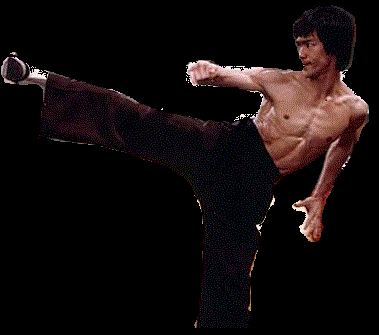Ninjutsu
Ninjutsu (忍術) sometimes used interchangeably with the term ninpō (忍法)[citation needed] is the martial art[citation needed], strategy, and tactics of unconventional warfare and guerrilla warfare as well as the art of espionage purportedly practiced by the shinobi (commonly known outside of Japan as ninja).
While there are several styles of modern ninjutsu, the historical lineage of these styles is disputed. Some schools and masters claim to be the only legitimate heir of the art, but ninjutsu is not centralized like modernized martial arts such as judo or karate. Togakure-ryū claims to be the oldest recorded form of ninjutsu, and claims to date past the 1500s.
History:
Spying in Japan dates as far back as Prince Shōtoku (572–622), although the origins of the Ninja date much earlier. Ninjutsu was developed by groups of people mainly from the Iga Province and Kōka, Shiga of Japan.[citation needed] Throughout history the shinobi have been seen as assassins, scouts and spies. They are mainly noted for their use of stealth and deception. Throughout history many different schools (ryū) have taught their unique versions of ninjutsu. An example of these is the Togakure-ryū. This ryū was developed after a defeated samurai warrior called Daisuke Togakure escaped to the region of Iga. Later he came in contact with the warrior-monk Kain Doshi who taught him a new way of viewing life and the means of survival (ninjutsu).
Ninjutsu was developed as a collection of fundamental survivalist techniques in the warring state of feudal Japan. The ninja used their art to ensure their survival in a time of violent political turmoil. Ninjutsu included methods of gathering information, and techniques of non-detection, avoidance, and misdirection. Ninjutsu can also involve training in free running, disguise, escape, concealment, archery, and medicine.
Skills relating to espionage and assassination were highly useful to warring factions in feudal Japan. These persons were literally called "non-humans" (非人 hinin?). At some point the skills of espionage became known collectively as ninjutsu, and the people who specialized in these tasks were called shinobi no mono.
The eighteen skills:
According to Bujinkan members, Ninja Jūhakkei ("the eighteen disciplines") were first stated in the scrolls of Togakure-ryū.[citation needed] They became definitive for all ninjutsu schools.[citation needed]
Ninja jūhakkei was often studied along with Bugei Jūhappan (the "eighteen samurai fighting art skills"). Though some are used in the same way by both samurai and ninja, other techniques were used differently by the two groups.
The 18 disciplines are:
Ninjutsu as depicted in a 19th century sketch
1.Seishinteki kyōyō – spiritual refinement
2.Taijutsu – unarmed combat
3.Kenjutsu – sword techniques
4.Bōjutsu – stick and staff techniques
5.Sōjutsu – spear techniques
6.Naginatajutsu – naginata techniques
7.Kusarigamajutsu – kusarigama techniques
8.Shurikenjutsu – throwing weapons techniques
9.Kayakujutsu – pyrotechnics
10.Hensōjutsu – disguise and impersonation
11.Shinobi-iri – stealth and entering methods
12.Bajutsu – horsemanship
13.Sui-ren – water training
14.Bōryaku – tactics
15.Chōhō – espionage
16.Intonjutsu – escaping and concealment
17.Tenmon – meteorology
18.Chi-mon – geography
The name of the discipline of taijutsu (体術?), literally means "body skill" or "body art". Historically, the word taijutsu is often (in Japan) used interchangeably with jujutsu (as well as many other terms) to refer to a range of grappling skills. The term is also used in the martial art of aikido to distinguish the unarmed fighting techniques from other (e.g. stick fighting) techniques. In ninjutsu, especially since the emergence of the ninja movie genre in the 80s, it is also used to avoid the undesired bravado of explicitly referring to ninja combat techniques.





